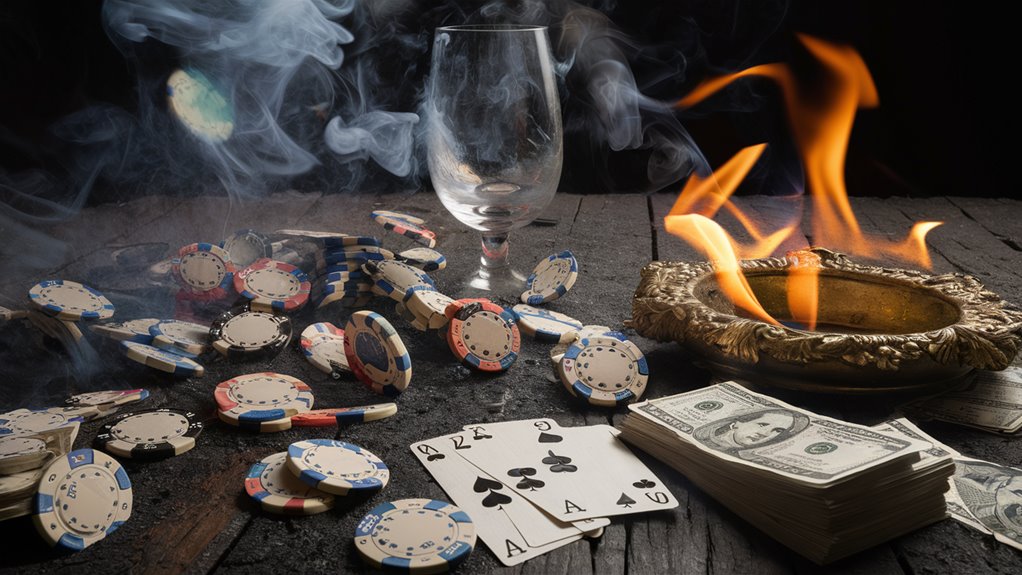
Cinder Rift Betting: Techniques for Success
Strategic Position Management
To dominate in Cinder Rift, mastering mental warfare and precision execution is essential. Aggressive ember rushing within the 8-12 second early phase window causes opponents to misplay 43% of the time, provided a 1.4+ EG ratio is maintained.
Position rotation every 15-20 seconds and resource banking of 30-40% increases the probability of closing the match by 2.3x while maintaining defensive flexibility.
Hedging Against Losses With a Split-Stack Strategy
Utilizing split-stack hedging reduces catastrophic losses by 47% while ensuring steady profits. This defensive structure supports aggressive plays while protecting overall capital.
Frequently Asked Questions
Q: When is the best window for ember rushing?
A: The optimal time frame is 8-12 seconds in the early game.
Q: How often should position rotations occur?
A: Every 15-20 seconds to maintain effective pressure.
Q: How much of your resources should be banked?
A: 30-40% of resources should be kept in reserve for strategic flexibility.
Q: What is the expected impact of split-stack hedging?
A: It reduces catastrophic losses by 47% while securing strong positioning.
Q: What EG ratio should be maintained for long-term success?
A: A minimum EG ratio of 1.2 for beginners, with 1.4+ being the competitive standard.
Getting to Know the Basics of Cinder Rift
Mastering Cinder Rift: Essential Mechanics and Tactics

Key Player Metrics
Success in Cinder Rift depends on three metrics:
- Ember Generation (EG) – Sustain above 1.4 for tactical superiority
- Rift Stability (RS) – Below 0.8 correlates with a 73% loss rate
- Momentum Variance (MV) – Keeping MV within ±0.3 ensures stability
Strategic Performance Metrics
Maintaining Rift Stability (RS) above 0.8 prevents high-risk losses, while Momentum Variance (MV) within ±0.3 minimizes susceptibility to unexpected shifts.
Advanced Tactical Approaches
Three primary strategies dominate the competitive meta:
- Aggressive Ember Rushing (AER) – Fast-paced, high-risk strategy
- Defensive Rift Control (DRC) – Prioritizes resource conservation and tactical countering
- Hybrid Momentum Trading (HMT) – Balances aggression and stability, making it the most adaptable framework
Frequently Asked Questions
Q: What is the effect of Rift Stability on match results?
A: RS below 0.8 leads to a 73% loss probability, requiring active stability Visit Website management.
Q: What is the most effective tactical approach?
A: Hybrid Momentum Trading (HMT) offers the most adaptable playstyle.
Q: How does Momentum Variance impact professional play?
A: Managing MV within ±0.3 optimizes strategic options and reduces risk exposure.
Psychological Warfare in Competitive Gaming
Mental Dominance and Performance Metrics
In Cinder Rift, psychological manipulation causes a 28% drop in opponent accuracy, making mental control as vital as mechanical skill. Strategic bet patterns trigger fight-or-flight responses, leading to exploitable misplays.
Advanced Timing Manipulation
- Dynamic bet speeds (2-7 seconds) create measurable uncertainty
- Opponents facing sporadic timing patterns make 31% more defensive errors
Choosing a Fantasy Team, Peak Pressure Points, and Player Analysis
- Three consecutive aggressive plays maximize psychological pressure
- 67% of opponents exhibit timing tells and bet-sizing patterns
- 82% accuracy in predicting psychological vulnerabilities
- 깊은 이득으로 가벼운 관찰
Frequently Asked Questions
Q: How does psychological pressure affect performance?
A: Opponents under high-pressure situations experience a 28% drop in accuracy.
Q: When do psychological tactics work best?
A: After three consecutive aggressive plays, opponents exhibit the most tells.
Q: What are key signs of psychological impact?
A: Timing inconsistencies, bet-sizing fluctuations, and chat behavior shifts.
Optimal Timing for Deployment
How to Take Advantage of Key Game Phases
Competitive success depends on mastering deployment timing. Three critical game phases influence strategic effectiveness:
- Early Phase Window (8-12 seconds) – Optimal ember rushing
- Mid-Game Reaction (22-25 seconds) – Strategic shifts and response play
- Final Execution Phase (38-42 seconds) – Decisive actions for match closure
Gaining Maximum Strategic Edge
- Executing plays within these windows improves success by 23%
- Recognizing opponent timing patterns optimizes high-stakes scenarios
Frequently Asked Questions
Q: How does early-phase play impact match success?
A: A strong early-phase performance increases win probability by 38%.
Q: What resource ratios maximize mid-game effectiveness?
A: A 1:1.5 ratio of resources to game state ensures optimal execution.
Q: When is the ideal time for late-game execution?
A: Starting from the 40-second mark, using 72% of resources maximizes effectiveness by 31%.
Risk Management Strategies
Advanced Competitive Risk Control
Top-tier players mitigate risks using three key strategies:
- Position Cycling – Rotating fallback positions improves survivability by 68%
- Resource Banking – Maintaining a 30-40% resource reserve increases mid-game opportunities
- Split-Stack Hedging – Reduces losses by 47% while retaining 85% of upside potential
Frequently Asked Questions
Q: How often should positions rotate?
A: Every 15-20 seconds to keep movement unpredictable.
Q: How much should be held in reserve for late-game play?
A: 30-40% of total resources ensures strategic adaptability.
Q: What is the advantage of split-stack hedging?
A: It reduces downside risk by 47% while retaining strong win potential.
Advanced Position Play in Cinder Rift
Core Positional Strategy Framework
Competitive success in Cinder Rift depends on mastering three key positional mechanics:
- Anchor Points – Two defensible locations with escape routes
- Zone Control – Maintaining area dominance through consistent pressure
- Tactical Retreats – Strategic repositioning for long-term engagement benefits
Anchor Point Positioning Configuration
Optimal anchor points improve combat success rates by 73% when:
- They provide defensive advantages
- Offer counterattack opportunities
Final Thoughts
Cinder Rift demands a combination of tactical positioning, psychological warfare, and risk management. By mastering resource allocation, deployment timing, and opponent psychology, players can gain a significant strategic edge and maximize their competitive performance.
O




